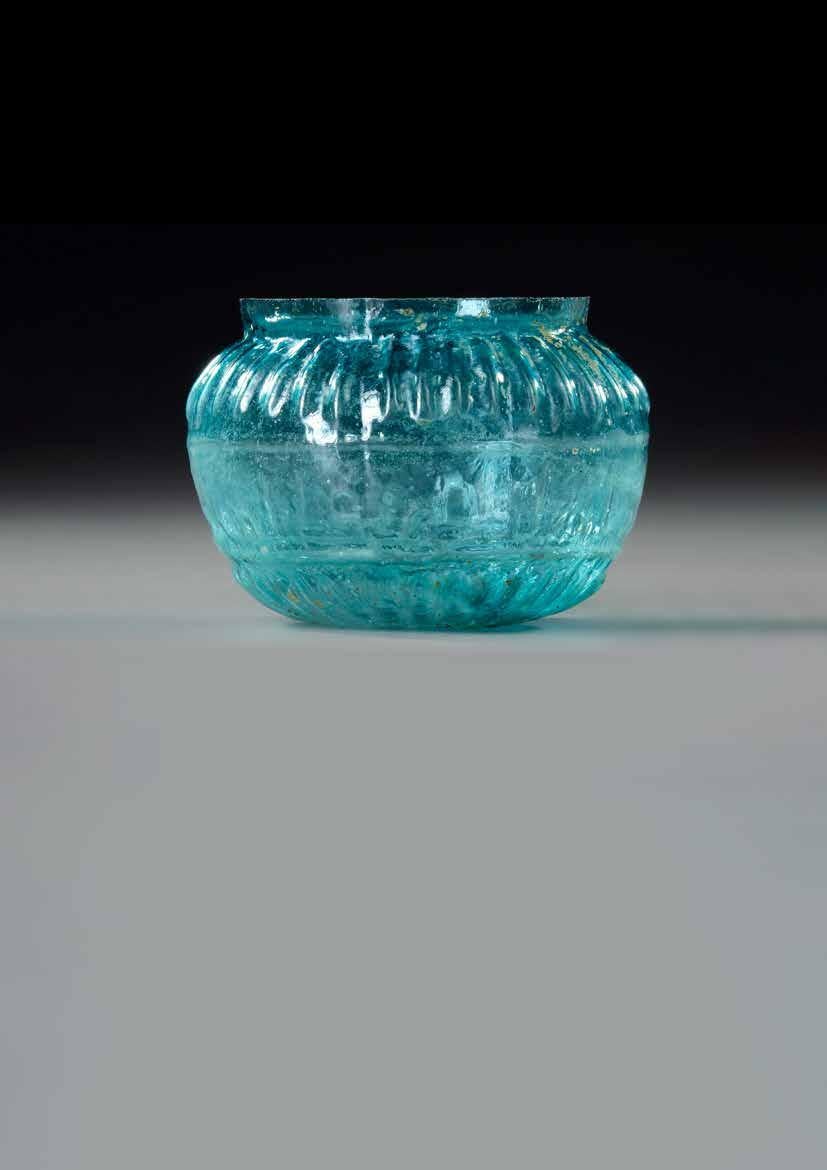
2 minute read
AN ILLUMINATED QAJAR QURAN BY ISMAIL IN 1244 AH/1828
Ad
Arabic manuscript on paper, each folio with 12 lines of elegant black naskh, gold and polychrome roundel verse markers, large gilt and polychrome floral marginal ‘juz and hizb’ medallions, text within gold and polychrome rules, surah headings in red on cartouches with gold ground and gold and polychrome floral illumination at either end, occasional marginal commentary in gilt thuluth script on a blue decorated ground, opening six bifolia fully illuminated in gold and polychrome, end of the text with prayers and dedication, written by Ismail in Esterabad in 1244 AH/1828 AD. In gilt Qajar lacquer binding with central cartouche enclosing flower heads and surrounded by spandrels containing scrolling floral. 9 by 14 cm.
Advertisement
Estimate € 12.000 - € 15.000
Lot 178
A LARGE VIEW OF MEDINA, INDIA, LATE 19TH CENTURY
Gouache heightened with gold on paper, ruled in black and blue, with a thin green border. Depicting the holy Nabawi-Mosque surrounded by houses in Medina. 44 by 61 cm.
Catalogue Note
In style these paintings relate to others of Mecca and Medina done by Indian artists. The depiction of the buildings in these paintings, recall that found on Pahari paintings, see for instance a painting entitled ‘Krishna Espies Radha and the Gopis’ done in the Guler style in circa 1790-1800 (John Seyller and Jagdish Mittal, Pahari Paintings in the Jagdish and Kamla Mittal Museum of Indian Art, Hyderabad, 2014, fig.20, p.247). When he visited Mecca in 1853, Richard Burton wrote that a number of Indian artists there supported themselves by ‘drawing pictures of the holy shrines in pen and ink’ (Richard Burton, Personal Narrative of a pilgrimage to Al-Madinah & Meccah, London, 1893, p.341 quoted in Stephen Vernoit, Occidentalism, The Nasser D. Khalili Collection of Islamic Art, London, 1997, p.33). These miniatures are probably of the type of work done by these artists.
Estimate € 1000 - € 1200

Lot 179
TWO OTTOMAN METAL-THREAD TEXTILE PANELS WITH THE NAME ALLAH AND MUHAMMAD, TURKEY 19TH CENTURY

A silk panel embroidered with gilt and silver metal threads in relief with a central medallion featuring Allah in a large thuluth script encircled by a calligraphic red silk band, radiating rays and four corner roundels each embroidered with al-rahman/ al-rahim/ al-malik / al-quddus (‘The Most Compassionate. The Most Merciful. The King. The Holy One’) on a green silk ground.
116 by 111 cm.
Inscriptions
In the centre: “allah jalla jalalahu, ‘God, exalted be His glory”
In the band: Quran, surah Al-Fath, v. 4-5 . with the tughra of Sultan Mahmud II (r.1808-39 AD) including the phrase that it is his hand.
In the four roundels: al-rahman/ al-rahim/ al-malik / al-quddus ‘The Most Compassionate. The Most Merciful. The King. The Holy One’
A silk panel embroidered with gilt and silver metal threads in relief with a medallion featuring the name of the Prophet Muhammad, framed by a band of calligraphy on red silk and emanating rays, the corner roundels each embroidered with the name of one of the first four Caliphs on a green silk ground.
In the centre: “muhammad rasul allah sall allah ‘alayha wa sallam, Muhammad is the Messenger of God bless him and grant him salvation”
In the band: Quran surah Al-Fath, part of v.29, with the tughra of Sultan Mahmud II (r.1808-39 AD) including the phrase that it is his hand.
In the four roundels: Abu bakr al-siddiq radi allah ‘anhu/ ‘umar al-faruq radi allah ‘anhu / ‘uthman radi allah ‘anhu / ‘ali radi allah ‘anhu. “Abu Bakr the righteous, May God be satisfied with him. ‘Umar, the one who distinguishes truth from falsehood, May God be satisfied with him. ‘Uthman, May God be satisfied with him. ‘Ali, May God be satisfied with him”
Estimate € 8000 - € 12.000
Lot 180










